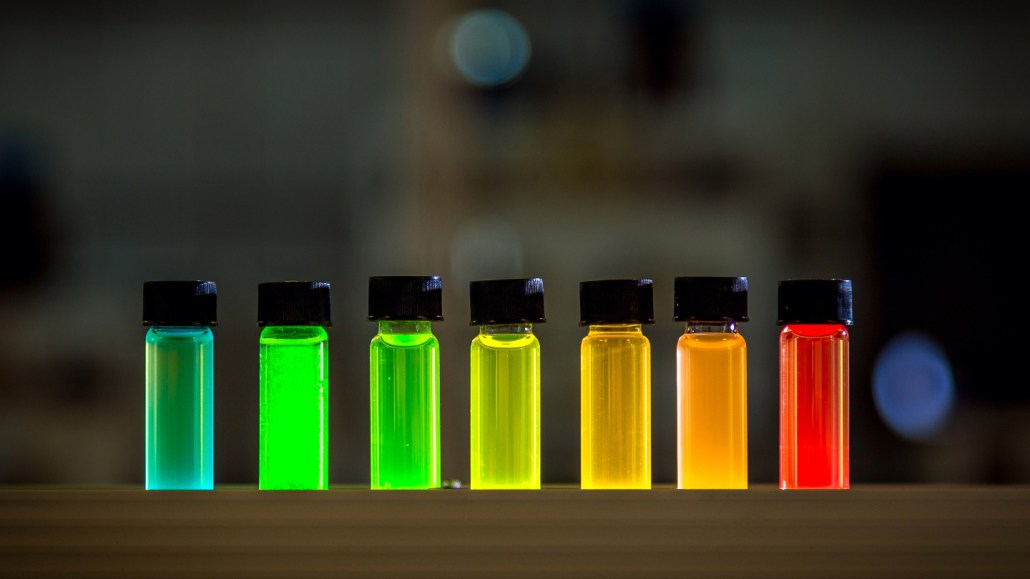
When exposed to ultraviolet light, the liquids in these vials glow different colors thanks to infusions of quantum dots of different sizes.
Tayfun Ruzgar/iStock/Getty Images Plus

When exposed to ultraviolet light, the liquids in these vials glow different colors thanks to infusions of quantum dots of different sizes.
Tayfun Ruzgar/iStock/Getty Images Plus